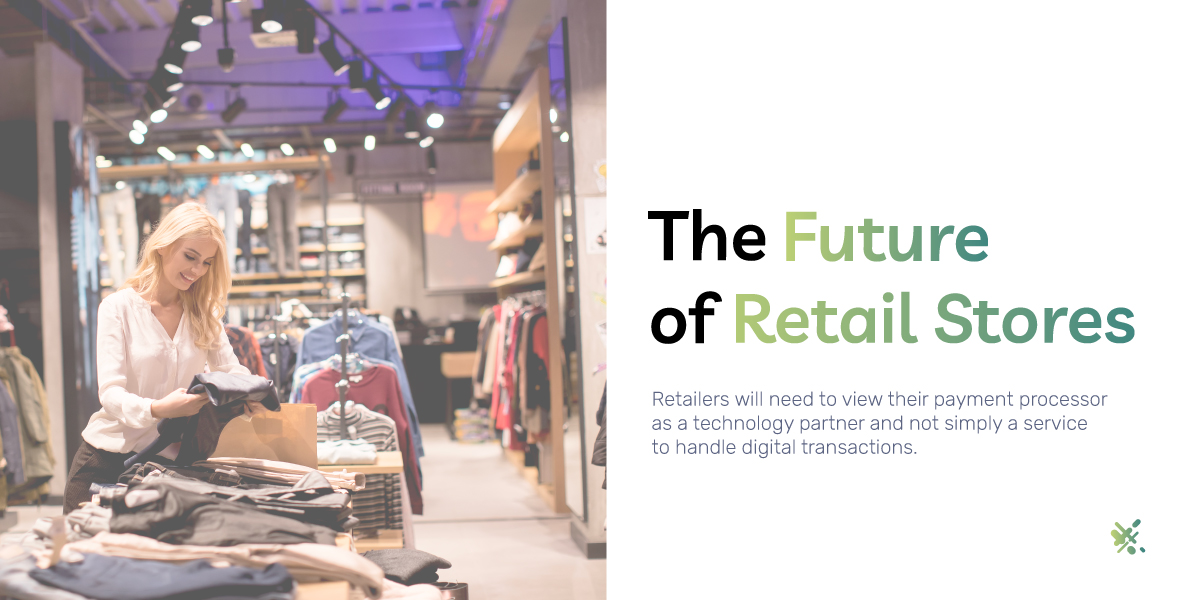It wasn’t that long ago many experts predicted the slow (or rapid) demise of brick-and-mortar retailers. E-commerce was booming, and it was hard for people to imagine a world where retail stores could compete on things such as selection, price, and 24/7 access. It seemed the only advantage retail stores had over e-commerce was the immediacy of buying your product and having it in your hand the same day.
However, even that is changing as overnight and two-day shipping are now the norm across e-commerce channels. Not only that, Amazon and a few other large retailers offer same-day shipping and delivery on popular items. The future of retail stores looked pretty bleak. But as with most things in technology and business, things don’t always go as originally predicted.
Now, physical retail stores are seen as having a renaissance starting in 2024 and beyond. Where new technology originally threatened the retail industry, similar technology allows them to operate more efficiently and provide the speed and service modern consumers demand.
Although this turnaround is just beginning, many retail analysts no longer believe physical stores will be washed away by e-commerce. Instead, these two channels will profitably coexist and serve distinctly different markets and consumers.
But to do this, retail stores will need to adapt to a new marketplace that is changing rapidly. These changes are fueled by technology, and those who adopt and leverage this tech will better meet consumer expectations.
To help make sense of this changing landscape, we’ll review the future trends for retail stores that want to adapt and excel in this new modern marketplace.
The Lines Between Channels Will Blur
As e-commerce took off, the landscape was shaping up to be a battleground between the online channel and the physical retail channel. Consumers somewhat felt compelled to make a choice. Even if they browsed in-store, many would go online to secure the best price. Ultimately, the consumer had to make the final choice on which channel to use for the purchase.
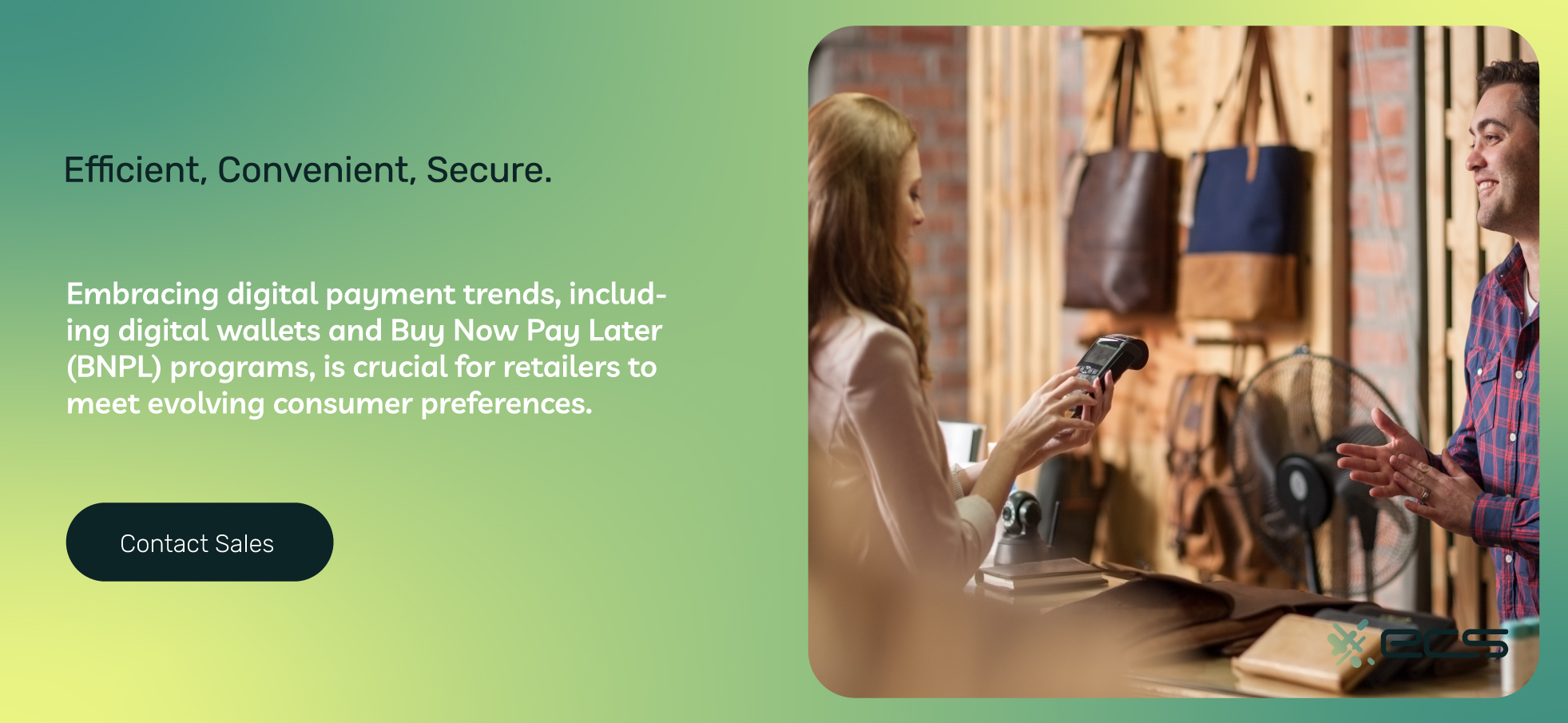
Introducing Influencer Marketing
But that has changed, and the main reason is consumer behavior, not businesses adapting to the change. Today’s consumers don’t learn about products and services by browsing online stores or walking through a retail space. Product discovery is now mostly done through social media platforms.
Influencers now hold the sway that TV advertising and flashy magazine ads had decades ago. Consumers learn about the products and brands they love through their feeds and social media interaction on popular platforms. This has drastically changed the shopping experience, but what does this change mean for retail stores, and how can they take advantage?
Retail stores must find their way into this new channel that blurs the line between e-commerce, marketing, social, and physical retail. The brands and stores that can effectively reach their audience in these new ways will reign supreme in a modern retail landscape.
If you’re a retail store targeting younger consumers, you should already be starting this type of transition for your marketing and branding efforts. Retailers with a slightly older clientele can afford to move a bit more slowly.
However, as we’ve seen with other technological trends, these trends will work their way up the age brackets relatively quickly. Older populations were originally slow to migrate to social media platforms, but now they make up a near majority of users on some of the biggest sites, such as Facebook. Smart retail businesses should either implement these strategies now or incorporate them into short- and medium-term planning.
The Direct To Consumer (DTC) Model Will Reemerge
Over the past decade, the DTC business model soared and then crashed spectacularly. Startups of all types were attracting venture capital for their DTC business models. Part of the hype behind DTC models was that consumers are so comfortable with e-commerce, so why bother with retail intermediaries?
The idea was to start offering various consumer goods and products directly to consumers at great prices via e-commerce channels. However, they may have been too early to the party. And as anyone in business already knows, being too early is just as bad as being too late to a trend.
When digital marketing prices rose, and venture capital money started drying up, these DTC brands that soared to astronomical heights crashed back to earth. Many of the biggest names, like Casper and Warby Parker, were caught out and saw their value plummet, or they went under entirely.
However, the idea was sound, and many brands that failed were simply too early and managed their capital poorly. Recently, Pharmaceutical giant Eli Lilly announced a new DTC model that sent shockwaves across their industry. It likely also sparked a new wave of entrepreneurs looking to rekindle the DTC fire and bring products directly to consumers.
So What’s Different This Time Around?
Previously, we mentioned that the blurring of lines between channels is occurring. A DTC model better fits into that blurred-line landscape than it did just a few short years ago. Brands can build loyalty and earn respect via social media channels and partnerships with big influencer names and other brands. Consumers are much more receptive to this type of marketing than they were during the original DTC bubble.
You may be thinking that a DTC model is online only, and a retail presence isn’t necessary. But that’s another key difference from the previous DTC bubble era. New DTC brands will lean into a retail presence through partnerships and even their own locations. Remember, the trends all point to breaking down boundaries between channels.
A retail presence also allows DTC businesses to create a more tailored consumer experience. The business can better control the experience customers have compared to online-only sales or social media sales.
If you’re an existing retail store, you want to partner with relevant DTC brands that offer products you feel resonate with your customers.
This can be anything from a small specialty food retailer that partners with DTC makers of unique artisan food items. It could also be as large as a regional chain of retail stores partnering with a big DTC brand to bring home furniture into their store.
The possibilities are endless, and every retail store can start to forge these partnerships, no matter the size.
Data Will Rule Most Decisions For The Future of Retail Stores
Data has always been crucial in retail, but it will be more important in the future. But, not just any data will work. As regulations and consumer behavior change, retailers need to focus on capturing their first-party data.
Companies are already phasing out things like cookies or device ID tracking. We mentioned the demise of the previous DTC boom, and part of that was tracking changes made by Apple, which made it harder for DTC firms to target customers through third-party data.
Without specific targeting technologies via third-party data, the acquisition cost can increase substantially. This also makes scaling much more difficult. Retailers relying on third-party data and old tracking methods will fall behind and miss out on crucial data.
Focusing on First-party Data Capture
Retailers instead should focus on first-party capture methods such as reward apps and other internal data. Reward apps are probably the best way to capture your own data. However, retail apps can serve many other purposes that add value beyond just rewards.
Another way data will be used for retail stores in the future is through integration. Retail stores will increasingly merge and integrate data from various systems into their business operations. Retailers can then use modern analytical tools to aggregate and parse this data to find hidden trends and, therefore, opportunities that would otherwise go unnoticed.
Another benefit of first-party data capture is that it allows retailers to quickly personalize their offerings at scale. This scaling method has relatively low costs associated with it, making it superior to other growth strategies.
Intense personalization also plays into the trend of adding value to your retail brand. Part of the value younger shoppers appreciate is the belief that brands understand them.
One way to communicate to your customers that you understand them is to create hyper-personalized marketing messaging and offers tailored to their past behavior.
The only way to do this effectively and consistently is by leveraging your first-party data gained through capture initiatives like apps and software integrations within your business.
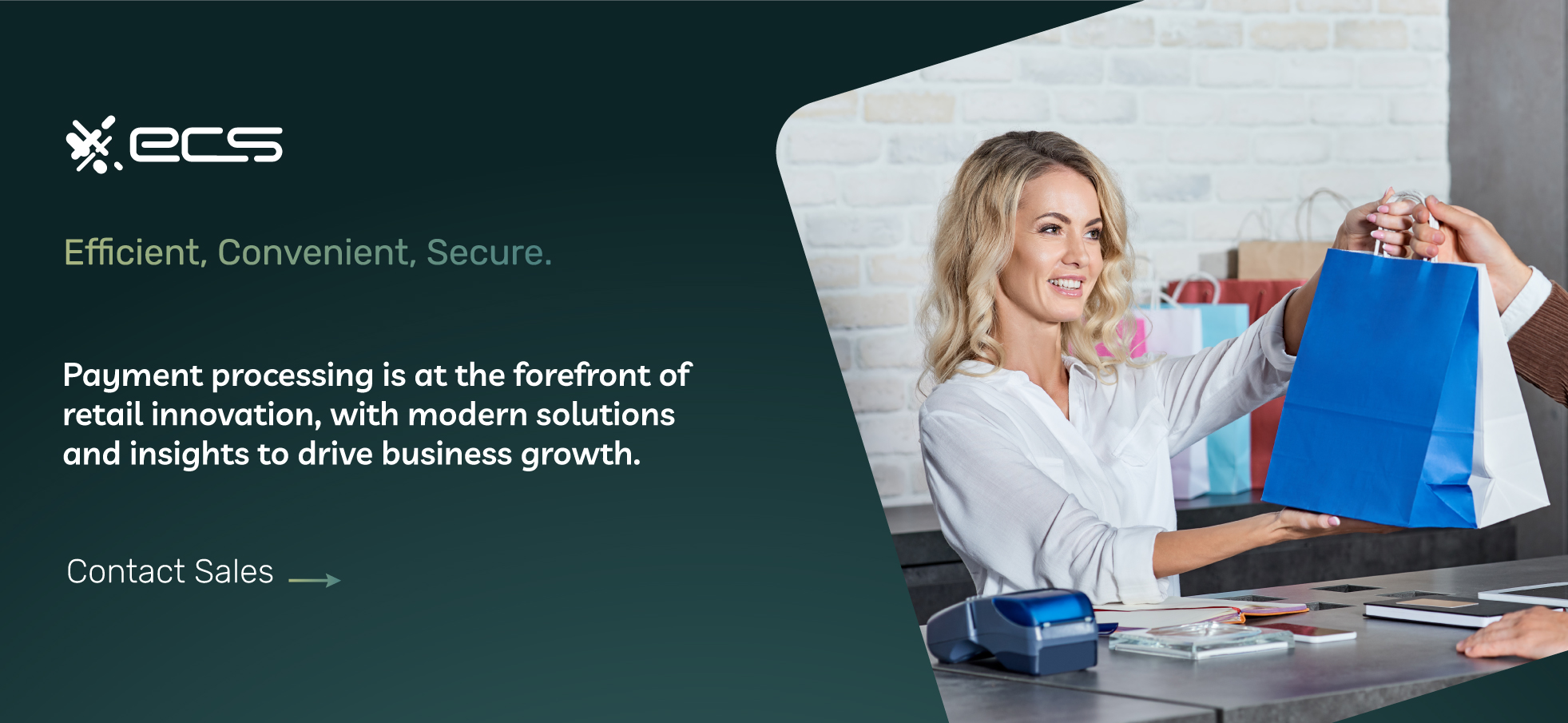

Retail Needs To Be An Experience
Retail stores were often protected because they served as a gateway for producers to access customers. Not only that, customers also looked to retail to find new products or be introduced to new brands. Those days are long gone, but many retailers are slow to adjust and still feel safe with their gatekeeper role.
Smart retailers are learning that by providing an experience for customers, they can expand their business model beyond just the traditional retail store role.
Providing an experience allows your retail store and brand to add value. Many statistics show that younger consumers will tolerate price increases if they feel the brand has value beyond simply selling goods.
An exceptional customer experience is the best way for brands and retail stores of any kind to quickly add value.
As inflation persists and weighs on consumers, it becomes imperative to seek avenues for competition beyond price. Engaging in price-based competition often leads to a downward spiral, particularly for smaller retailers that lack the pricing leverage to contend with larger industry players.
By adding value in other ways that larger retailers can’t, small retailers can carve out profitable areas within the market where they have some protection.
Future successful retailers will have a strong customer and brand experience throughout their stores. Money invested in this area will provide one of the best ROIs moving forward, especially for small retailers.
Embracing Digital Payment Trends For The Future of Retail Stores
Retail stores that succeed in the future will be the ones that embrace the fast-changing landscape of digital payments. A perfect example is the rapid growth and adoption of digital wallet payments. Most experts thought these take years to catch up with groups outside tech-savvy early adopters. But they have become one of the fastest-growing trends in payments.
Most younger shoppers now say they would not shop at a retail store that doesn’t offer digital wallet payments. Currently, wallets like Apple Pay, Google Pay, and Samsung Pay are the dominant players in the space. However, in the coming years, that could change.
“Super Apps”
In many parts of the world, consumers are adopting so-called “super apps .” These are apps that combine many different functions, including banking and payments. Regulations have kept these technologies somewhat muted in America and parts of Europe. But in Asia, consumers flock to these super apps and use them as the dominant payment method for goods in retail stores.
This trend will likely come to America in the near future, and retailers need to be ready with modern payment hardware that can accept these newer digital wallets as they come online.
As we saw with the emergence of digital wallets like Apple Pay, their rate of adoption was faster than predicted. So, those retailers who waited to upgrade their payment hardware likely lost out on customers during that initial growth phase.
Buy Now Pay Later (BNPL) Growth
Another trend that will continue in the coming years is Buy Now Pay Later (BNPL) growth. BNPL startups garnered immense attention, and much of it rightfully deserved. Customers have embraced BNPL programs online, and the trend has been growing.
Now, that trend is moving to retail, and these new instant credit programs allow stores to sell more items and attract a new type of customer. Regulations will likely impact the BNPL space, but the trend is unlikely to go away. Several BNPL providers are branching out into other financial products, such as debit cards and even bank accounts.
Smart retailers looking toward the future always want to stay ahead of the curve. One of the best ways to do that is to embrace digital payments and the hardware necessary to process those payments.
Payment Hardware Will Centralize The Future of Retail Stores
It’s likely that most retailers already see this trend happening. Payment hardware and software will continue centralizing and integrating with other software you use for business. Point of sale (POS) systems continue to evolve, becoming more integrated with a wide range of business applications such as analytics, AI inventory management, and other business intelligence tools.
Today, contactless payment terminals are gradually replacing physical card readers, which are still necessary. The use of physical cards will start declining rapidly over the next few years. We doubt physical card readers will be completely phased out in the near future, but they will most certainly take a back seat to newer contactless devices based on RFID.
There has also been a strong trend toward retailers moving away from single service areas and instead having associates use mobile devices to serve customers throughout the location. These devices allow team members to approach customers where they are, check inventory and prices, or even complete a sale without walking to a different area or having the customer wait in line to speak to another representative.
Very recently, augmented reality devices have been introduced to integrate with POS systems in specific retail environments. A centralized POS system, accessible wirelessly through mobile devices like smartphones, enables these types of advances.
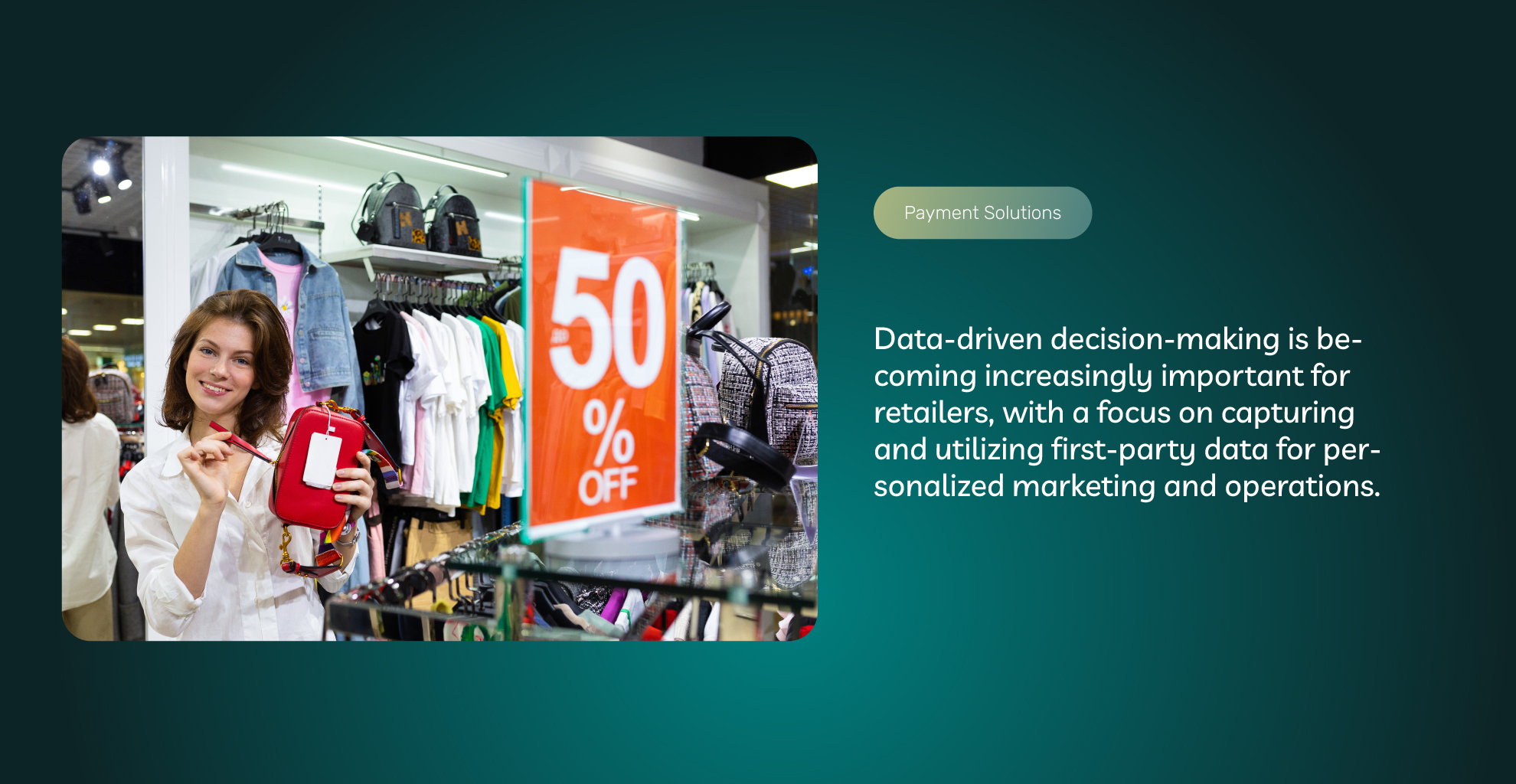
Loyalty Programs And Beyond For The Future of Retail Stores
The concept of loyalty programs for retailers goes back decades. These programs aim to enhance customer retention, create loyal customers, encourage repeat business, and boost average transaction amounts. In the future, loyalty programs will prove even more vital as a part of retail scaling strategy.
However, you want to avoid using an outdated loyalty program, especially one that relies on a card. Smart retailers are using loyalty programs in the form of mobile apps. These apps have far higher engagement rates than other methods.
Loyalty Through Retailer Apps
We’ve already mentioned how collecting first-party data will be a trend for retailers. One of the best strategies for collecting that data is through a retailer’s mobile app and reward program.
A loyalty program built into a mobile app will do more than just track points or benefits for the customer. Instead, retailers can use these apps as a bridge between their different channels. From social media to in-store to e-commerce, the mobile reward app can link all these channels and provide functions that keep customers engaged.
One example is allowing customers to do product comparisons right inside the app. Either by looking up items, scanning them in-store, or using online QR codes. Customers can then select certain items to track to keep in their “favorites” for later viewing. This creates data that the retailer can use to send highly personalized marketing messages.
Marketing Through Retailer Apps
Marketing messages created through this type of first-party data collection are not seen as intrusive. Instead, customers welcome them because they see them as useful and relevant.
The one thing that turns modern customers away more than anything is generalized marketing messages that are not relevant to them. Retailers can avoid this pitfall with a solid mobile app and first-party data strategy. Interestingly, many retailers are still late to this trend. Most smaller retailers still use basic loyalty reward programs and have no mobile app.
With third-party loyalty reward services, retailers of any size can create a mobile app and integrate their inventory and other data within the app. You can completely brand and white-label these third-party services for your business.
For larger retailers, they can have their own mobile reward app developed. The result will be well worth the initial investment in creating and maintaining the app. In tomorrow’s highly personalized environment, retailers can’t afford to miss out on this opportunity.
Using AI & Automation to Boost Personalization For The Future of Retail Stores
You’ve likely noticed that one of the common threads for the future of retail revolves around data and personalization. The only problem is putting that data to use in a cost-effective and beneficial way. Having too much data can be just as detrimental as having no data at all.
The solution for many retailers will be to leverage new AI tools to help them better utilize the data they’ve captured. AI is in its infancy, but many service companies like Salesforce or ServiceNow are pouring billions into their development. The result will be tools that can help retailers analyze their data and put it to use.
For example, AI tools can help you instantly segment your customers based on behavior and other factors. Instead of having to dedicate teams to this process or outsource it to agencies, you can do it in-house for a fraction of the cost.
Once analyzed, automation tools will help create automatic campaigns and strategies. You can automate setting up emails, mobile app notifications, and special offers.
Already, AI is being utilized to create more sophisticated chatbots that can be embedded in retail apps and websites. You can use these chatbots to help with customer service issues, returns, product questions, and even suggestions.
Some of these chatbots are more generalized. But over the next several years, highly specialized chatbots will be built for specific industries. The more specialized the chatbot, the more engaging the personalized experiences will be for customers.
Smarter Supply Chains For The Future of Retail Stores
The recent supply chain problems that struck global markets impacted many retailers. Supply chain breakdowns exposed a fatal flaw in Just In Time (JIT) inventory methods. Retailers are now looking to hybrid supply chain models that take the agile benefits of JIT and combine them with the risk management benefits of Just In Case (JIC) methods.
Another way retailers will update their supply chains is by combining online and retail distribution assets. For omnichannel retailers with physical stores, those stores can operate as a network of distribution hubs to extend their supply chain.
This unification of retail and online also shortens shipping times, making it easier to compete with larger retailers offering one-day or two-day shipping on all items.
However, this unification will require a robust inventory management program that can work across the different locations and the required SKUs offered by both channels. Once again, AI and automation will be at the heart of this move as retailers use tools to predict stock requirements ahead of time.
Building Partnerships With Suppliers
Successful retailers will be those that can form the strongest relationships with their suppliers. These partnerships will help retail stores navigate many common supply chain problems.
Your suppliers have their own advanced logistics and are likely implementing their own technology. Being a part of your supplier’s technological advancement and pairing it with your own is a way to build more resilient and smarter supply chains for the future.
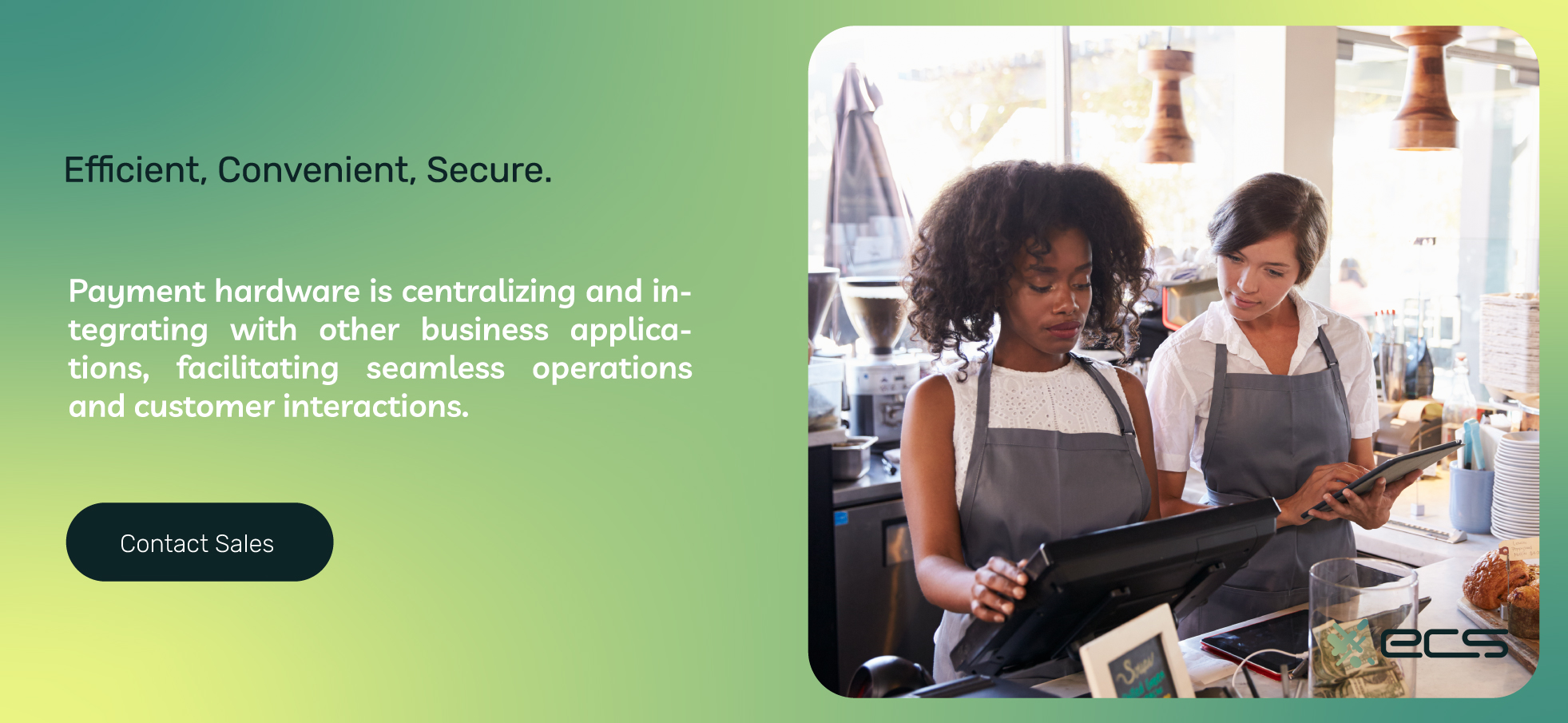
Payment Processing & The Future Of Retail Stores
Advances in payment processing will be central to many of the upcoming changes in retail operations. As we’ve mentioned, data will be one of the factors that determine who is a winner as the overall retail marketplace changes.
One of retailers’ biggest sources of that data will be through their payment systems. You can use payment systems to collect valuable data and then integrate it with other systems like inventory, AI tools, and CRMs to help gain insights into your customer behavior.
The problem is that legacy payment systems and technologies will have trouble integrating with these newer business tools. If retailers have data siloed in these legacy payment systems and workflows, they will find themselves at a disadvantage when trying to scale their business.
Retailers will need to view their payment processor as a technology partner and not simply a service to handle digital transactions.
Many retail automation and technology advancements will revolve around data integration. Without a trusted digital partner in the payment space, these integrations will be difficult to implement or even impossible in some cases.
At ECS Payments, we always look to provide our clients with the latest payment solutions to give them the tools they need to succeed. From digital wallets to the latest integrated industry-specific POS systems, ECS payments offer the solutions modern retailers need to fully leverage technology.
If you’re a retailer and want more information on the latest innovative digital payment solutions, contact ECS Payments today. Our in-house payment experts can help you find the solutions to reduce your costs and boost revenue in a fast-moving retail marketplace.
Frequently Asked Questions About The Future Of Retail Stores
Retail stores can thrive by establishing an online presence on social platforms and leveraging influencer marketing to adapt to consumer behavior and seamlessly integrate into the evolving digital landscape while maintaining a physical store presence.
The DTC model is experiencing a resurgence due to the blurring of lines between channels. Brands can now build loyalty through social media and influencer partnerships, offering a more tailored consumer experience.
Third-party tracking methods use third parties to gain consumer behavior insights. They are outdated and phasing out due to changing regulations. Therefore, first-party data is essential. Retailers need to capture their own data through methods like retail store reward apps. This allows for personalized marketing, better control over customer experience, and integration of data from various systems.
Providing convenient and diverse payment options such as the adoption of contactless payment options, digital wallets, “super apps,” and Buy Now Pay Later (BNPL) methods, caters to evolving consumer preferences, enhances customer satisfaction, improves shopping experiences, and contributes to overall business success.
